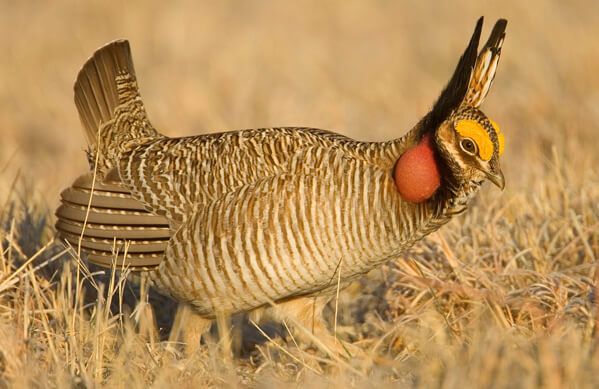
Texas judge removes ESA protections from lesser prairie chicken
August 13, 2025
by Michael Doyle, Scott Streater
E&E News
A Texas-based federal judge assented to a Trump administration request Tuesday and ended Endangered Species Act protections for the lesser prairie chicken.
In an unusual ESA plot twist, U.S. District Judge David Counts vacated the Fish and Wildlife Service’s 2022 rule determining the animal needs federal protections after the agency itself said it had found a “serious defect” in the listing.
“Fish and Wildlife’s concession points to serious error at the very foundation of its rule,” Counts reasoned in his opinion, adding that “mere remand would not cure this error.”
Environmental groups that support continued federal protections for the lesser prairie chicken had urged the judge to keep the 2022 listing in place while FWS tried to fix the alleged problems.
“It’s bitterly disappointing to see a federal judge accept the Trump administration’s bad faith rationale for stripping the lesser prairie chicken’s urgently needed protections,” said Jason Rylander, the legal director of the Center for Biological Diversity’s Climate Law Institute.
Rylander added that “this ruling has nothing to do with science or the law and everything to do with kowtowing to the oil and gas industry.”
FWS has a policy of not commenting on litigation. The agency could not be immediately reached Wednesday afternoon.
Counts was nominated by President Donald Trump to the U.S. District Court for the Western District of Texas, where the lesser prairie chicken has long roosted in successive rounds of litigation.
FWS first listed the lesser prairie chicken as a threatened species under the ESA in 2014. Energy industry groups and others challenged the listing, which was vacated in 2015.
Following receipt of another listing petition and further study, FWS in November 2022 listed the northern distinct population segment of the lesser prairie chicken as threatened and the southern population of the species as endangered.
The state of Texas joined with industry groups including the Permian Basin Petroleum Association in filing suit against the ESA determination.
“Following the change in federal administration in January 2025, Fish and Wildlife re-evaluated [the challengers’] claims,” Counts observed, adding that “Fish and Wildlife now believes it erred … and did not provide a sufficient justification” for the division into two distinct population segments.
Counts further declared that the federal agency “commits no handwaving when it also concedes that this failure causes the Final Listing Rule to be ‘unlawful’” and therefore subject to being entirely wiped off the books.
Bryce Dubee, a spokesperson for the Texas Railroad Commission, which was part of the state lawsuit in early 2023 challenging the ESA listing, called Counts’ decision “welcome news” for the state.
Dubee said the commission “opposed this listing because of its negative impact on the state’s vital energy industry which benefits millions of Texans and the state’s budget and economy.”
The lesser prairie chicken’s full range extends across parts of five states. The 2022 listing identified the southern segment as extending from New Mexico to West Texas, while the northern population spanned Colorado, Kansas and Oklahoma.
FWS identified the primary threats in both segments as “loss of large, connected blocks of grassland and shrubland habitat,” with the southern population facing higher risk of extinction due to the region’s hotter climate and vulnerability to prolonged drought.
As such, the law places tighter restrictions on activities within the southern population segment than the northern segment.
In a previous court filing, the Trump administration said that local conservation efforts would be sufficient to protect the species while a new ESA listing petition and review process was underway.
Conservation groups disagree. They blasted the judge’s decision, saying it all but dooms the bird.
“Removing protections for the lesser prairie chicken would be devastating news and would effectively sign an extinction warrant for the species,” Andrew Carter, director of conservation policy at Defenders of Wildlife, said in an emailed statement. “As a bird that once numbered in the millions, it is now down to a fraction of that amount, having lost about 90 percent of its habitat.”
